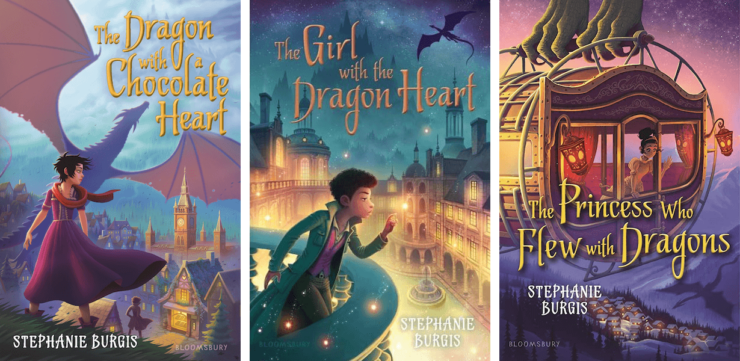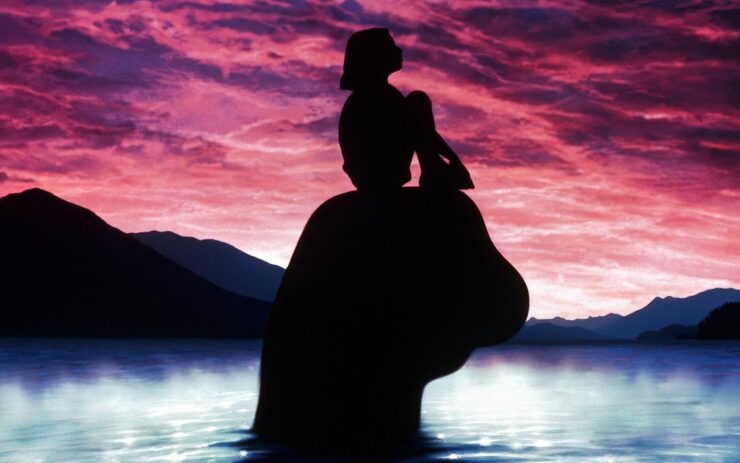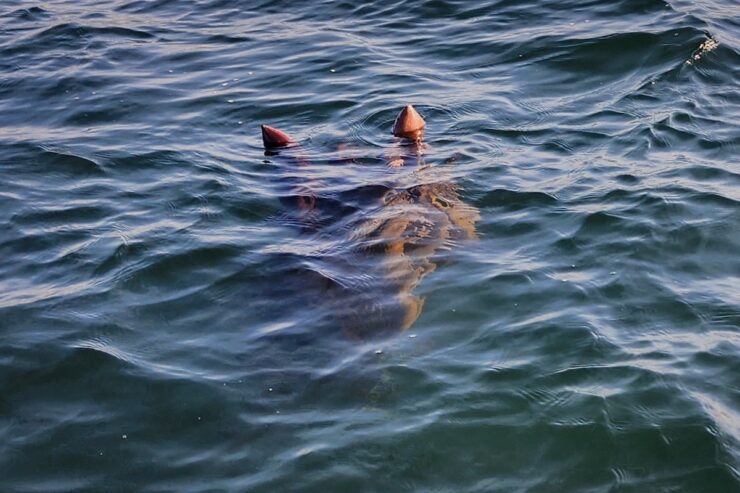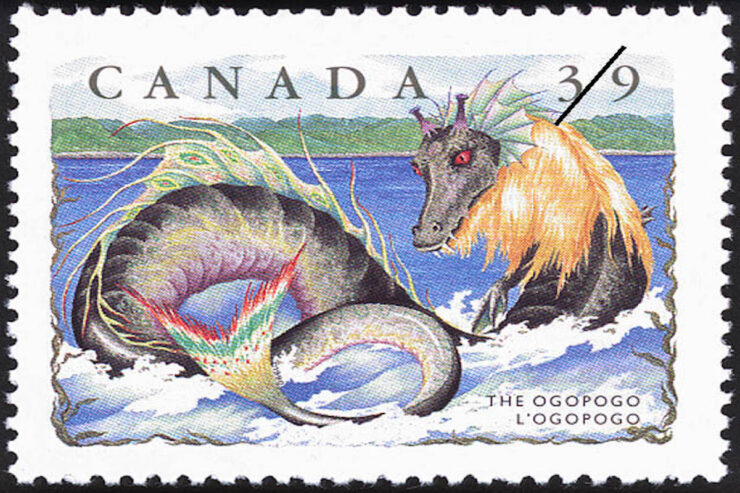All right. I confess. I could not resist.
Once I started thinking about The Dragon With a Chocolate Heart, I knew I had to reread it. Then I dug the rest of the series out of my TBR pile and read those.
I had to. They’re addictive. Like chocolate.
Human to animal transformation is pretty much the standard. Nonhuman to human is not so common. That’s not to say it’s nonexistent—there are plenty of examples. But it’s a little more of a rarity. The Dragon With a Chocolate Heart does things with the trope that ring a few familiar bells, but then goes off in a direction entirely its own.
The dragons are their classic selves: fierce, flaming, living in caverns and sleeping on beds of treasure, eating whatever they can hunt, including humans. The humans live in fairytale-land with a German-Austrian flavor, not quite so grim as the Grimm Brothers, but the names and the landscape and the political backdrop point more toward the Alpine states than the lighter confections of France. We’re past the age of knights in armor and into the world of the baroque, with a subtly contemporary but historically accurate twist: sharp class distinctions, strong income inequality, and news that travels through newspapers and printed advertisements.
It’s a world full of magical creatures. Dragons of course. Goblins and kobolds, fairies and ice giants. Fairies are made of magic. Dragons neutralize it. Humans can wield it, though the gift is not common. There are battle mages and sorcerers, and best and most unusual of all, food mages.
The protagonist of the first volume is a dragon named Aventurine. She’s a classic Burgis heroine, hot-tempered and outspoken and absolutely bound and determined to escape from her tightly restricted life. Like all young dragons, she’s been told in no uncertain terms that she’s too delicate to venture into the world outside her family’s caves. Her scales will take years to harden enough to protect her, and her wings are too fragile to be safe for flying.
Young dragons are supposed to use their years of confinement to gain an education and discover their life’s passion. Her brother Jasper cultivates philosophy. Her maddeningly perfect older sister Citrine is a famous epic poet, so celebrated and so successful that she has her own home and her own massive store of treasure.
Aventurine’s only passion is for freedom. She wants desperately to see the world. She keeps trying to to escape, and keeps being herded back into captivity.
At last one day she succeeds, slipping out through a tiny exit that’s almost too small for her body. She tears her scales and injures her wings badly, but she presses on. She escapes into the wide and terrifying world.
Almost immediately, she meets a human camping in the mountains. She would simply eat him, but he’s cooking something so alluring, so delicious, that she just has to find out what it is.
What he’s making is chocolate. Aventurine has found her passion.
She’s also found a food mage. The next thing she knows, she’s not a dragon anymore. She’s a small human girl in a garment that looks like her dragon scales.
Aventurine is more than ready to go back home by this time, but her family is looking for a dragon, not a human. She’s nearly incinerated by her own grandfather. Her only choice is to go to the nearest human city, Drachenburg, and pursue her passion for chocolate. And, she hopes, find a way to become a dragon again.
That’s not as urgent as it might be, because a dragon’s passion is all-consuming, and Aventurine’s passion is chocolate. She wants—needs—to learn everything about it. The best way to do that, she decides, is to become a chocolatier’s apprentice.
She has to navigate the complexities of human culture, and learn how to behave in at least a marginally acceptable human way. Aventurine may look like a human and be forced to live among humans, but she is all dragon. She is fierce and fiery. She has to struggle to understand a species that solves problems in other ways than by roaring in and flaming them—or hunting them down and eating them.
Luckily for her, she makes good, strong friends who, when the truth of her species comes out, accept her for all that she is. She’s a ferocious predator and powerfully territorial, but she’s also loyal and honest and devoted. Once she determines that Drachenburg is her territory, she’ll do whatever it takes to protect it and the people who live in it. Which means no more eating humans.
Buy the Book


The Saint of Bright Doors
But it’s all worth it, because chocolate.
The rest of the series is less focused on the dragon-human transformation and more on the conflicts between the kingdom of Drachenheim and the other realms of the world, both magical and human. Aventurine moves aside in the The Girl With the Dragon Heart in favor of her best friend Silke, a human girl whose family has been destroyed by fairies. Silke’s story is also one of transformation, but it’s emotional and economic rather than physical. Among other things, Silke has to transform herself into a lady-in-waiting to a princess. She discovers the truth about her lost parents, and attracts the notice of the Crown Princess, which is an alarming thing all on its own.
Silke has a heart like a dragon. She is fierce, brave, loyal, and protective of her friends and family. She and Aventurine are very much alike.
In The Princess Who Flew With Dragons, Sofia, the younger princess of Drachenheim, is thrust into a role she never thought she could play. Her elder sister forces her to attend a grand diplomatic gathering many hundreds of miles away. Because it’s so far, she and her ladies and her guards have to be transported by dragon.
Sofia, it turns out, is very, very susceptible to motion sickness, which means that three days in a closed coach being carried by a dragon is pure hell for her and everyone who has to travel with her. She is also anything but diplomatic, and the king and queen who are hosting the gathering are in no way pleased to be visited by a dragon. Her mission is a crashing failure.
This is a novel of transformation, too. Arrogant, insecure, painfully shy Sofia has to learn what life is like for humans who are not born to royalty. She’s the exact opposite of Aventurine in that all she wants is to shut herself up in a comfortable room and read philosophy.
Sofia does not want adventures. What she does want is meet her hero, the great philosopher who teaches in the university in Varenne. She impersonates a student, which is a transformation, too, and makes friends with a girl gang of goblins and one wickedly sarcastic kobold.
And then her best friend shows up. She’s never met Jasper in person—he’s Aventurine’s brother whose passion is philosophy, and they’ve been carrying on a lively and frequent correspondence. Jasper wants to meet the great philosopher, too. He’s talked Aventurine into showing him how to turn into a human (and safely back into a dragon). Now here he is, transformed into a boy, just in time for Varenne to be invaded by ice giants.
The giants have good reason for the invasion, as Sofia and her friends discover. Sofia also discovers that, when she absolutely has to, she’s quite capable of negotiating a treaty. She’s not so different from Aventurine after all: she’s just as stubborn, just as cranky, and just as passionate about the things and people that matter to her.
There’s nothing else quite like this series. Dragons and fierce stubborn loyal girls and family and friendship and war and politics and magic and magical beings are all classic themes and tropes, but they combine in new and delightful ways—and the thing that brings them all together is chocolate. How can I resist that?
Judith Tarr is a lifelong horse person. She supports her habit by writing works of fantasy and science fiction as well as historical novels, many of which have been published as ebooks. She’s written a primer for writers who want to write about horses: Writing Horses: The Fine Art of Getting It Right. She lives near Tucson, Arizona with a herd of Lipizzans, a clowder of cats, and a blue-eyed dog.














